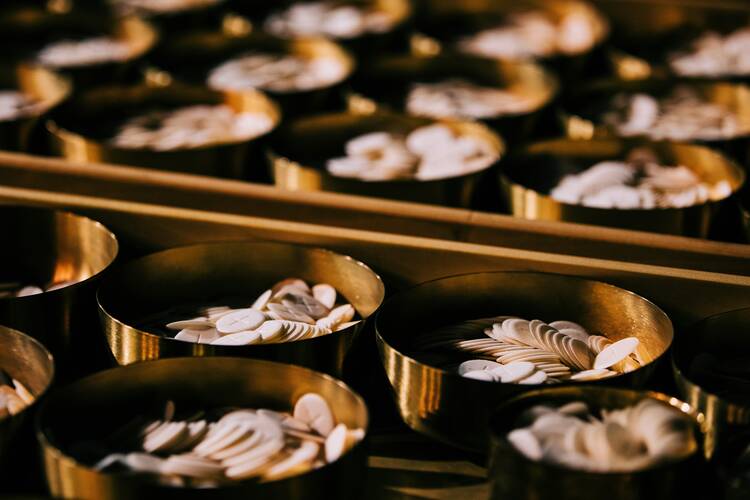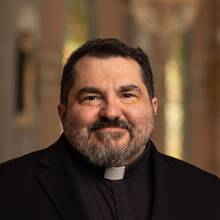A Reflection for Wednesday of the Third Week of Easter
Find today’s readings here.
We often connect the Eucharist with the death of Christ. Every eucharistic celebration brings us back to the final meal he shared with his disciples and to his passion and sacrificial death on the cross. The Gospel readings of this week’s daily liturgies remind us that the Eucharist is a participation in the resurrection of Christ as well.
The Gospel readings this week come from a passage in John’s Gospel called the “Bread of Life Discourse” (Jn 6:22-59). Jesus gave this lengthy sermon not long after he fed thousands of people with five loaves and two fish (Jn 6:1-15). The hungry crowds tried to make Jesus their king, but he fled them, even walking across the waters of the sea of Galilee to get away from them (Jn 6:16-21). He knew that their notion of kingship did not match the one God had sent him there to establish. The crowd nevertheless continued in pursuit and found him in Capernaum. There, he gave a thorough explanation of divine kingship. God’s reign does not consist of magical bread-making power, but of faith in a mystical bread of life.
Jesus chose this metaphor carefully. Bread was life in more ways than one. Bread built human bodies, and human bodies worked for bread. The resemblance of bread to human flesh (especially the whole-grain barley and wheat breads of Jesus’ day) were well-remarked among ancient poets and writers. Bread was life in another way. In the seasonal agriculture of the ancient world, foodstuffs came and went according to the seasons, but grain could be stored and was available year-round. Bread was probably the only thing people ate at every meal no matter the season. Anything else on someone’s plate was a surprise or an unexpected blessing from God. People might go months between vegetable harvests and years without eating meat. Bread gave life every single day.
In the Eucharist that Jesus left to his disciples, he added his own divine life to the life-giving properties of bread. As the bread of the Eucharist sustains our bodies, Christ’s own life in it sustains our souls with his life-giving Spirit. To believe in this––to crave it and seek it out and cherish it––is the basic act of faith that brings one into the Kingdom of God.
“I am the bread of life; whoever comes to me will never hunger, and whoever believes in me will never thirst.” Receiving the body and blood of Christ requires faith on many levels. It means to have enough faith to live like Christ, and to place oneself completely at the service of God’s call and mission. It also means to love like Christ, with humility, mercy and forgiveness, and to wash the feet even of people who might abandon and betray us. It also means to have faith strong enough to believe that––contrary to all sense––Christ is still alive and at work among us, supremely in the Eucharist but also in countless subtle ways that often go unnoticed. As we grow strong through the Bread of Life, we may start to notice how active Christ is in our lives. Then one day, we will be able to see nothing else. On that day, we too will rise.








